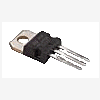-
Posts
46 -
Joined
-
Last visited
Never
Content Type
Profiles
Forums
Events
Everything posted by gg4rest
-
If you put your university as the company, they likely will give you the parts. I have done the same many times and got my parts.
-
A mobile phone jammer? I'm not sure the licensing authority would be too happy about that.
-
You are planning on using RS-232 over a distance of 100 meters? I am quite sure it won't be able to do it without difficulty. You should use RS-422 instead. RS422 offers greater noise immunity and greater communication distance than RS232. RS422 wiring can be up to 4,000 feet (1.219 km) in length using 24 AWG cabling.
-
Just thought I would post this link. It seemed relevant and quite descriptive on how to use a laser printer with some paper from staples. http://www.fullnet.com/u/tomg/gooteepc.htm
-
I am not sure of the regulations of your country; however, I found this on a site (see below). ISM2.4 and ISM5.8 are for the 2.4 GHz and 5.8GHz so they don't apply to you. You need to look at the dBm that the device gives (should be variable) and the gain of the antenna you are using. "Summary of Power Output Rules for ISM bands The limits are three: Maximum transmitter output is 1W (30 dBm) (47CFR15.247.b.1) Maximum EIRP is 4W (36 dBm) (47CFR15.247.b.3) i.e. for every dB of antenna gain above 6dBi, transmitter output must be reduced by 1dBm; per this rule, a 24dBi antenna limits the output power to 12 dBm which is 16mW For fixed point to point operation in ISM2.4, peak output need only be reduced by 1 dBm for every 3 dBi of antenna gain above 6 (47CFR15.247.b.3.i) i.e. per this rule, a 24 dBi antenna may be fed by 24 dBm or 250 mW In ISM5.8, you can apply all the antenna gain you want (47CFR15.247.b.3.ii) with no reduction in output power. "
-
I suggest using the ISM band (probably 900 MHz), the same one used by cordless phones. Texas Instruments offers some ISM RF ICs for transmitting and receiving. I don't know if you will get a 100 meter range though. You could test it if you had a cordless phone. Get someone to call you and then walk out to where you want the system. You may also be able to put a directional antenna to get additional range. The only other method I can think of is possibly modulating a laser pointed at a photosensor located at the house. Not sure how well that would be received though, might be okay for very low data rates. Or maybe a cell phone with a modem attached to the system which periodically dials the computer (or vice-versa) and updates the info. The simplest method is to log the data to flash and then pick up the memory card.
-
There is also the stiquito. It uses muscle wires to move and is quite light and cheap; however, it is also limited in its abilities to move. http://www.stiquito.com/
-
Analog Devices (www.analog.com) has several analog and digital temperature sensors and several of them are offered as free samples and the datasheets have some example circuits.
-
I am assuming this is a textbook question so it is drawn incorrectly as Ante pointed out, there should be "dots" to show that they are connected. However, assuming they are connected and I did my math and circuit reduction right. And assuming that p.d. stands for Potential Difference (ie Voltage) I=0.1436775 A V=5.89077 V I also assume that if this is for a class, then your professor will want you to show your work... :)


